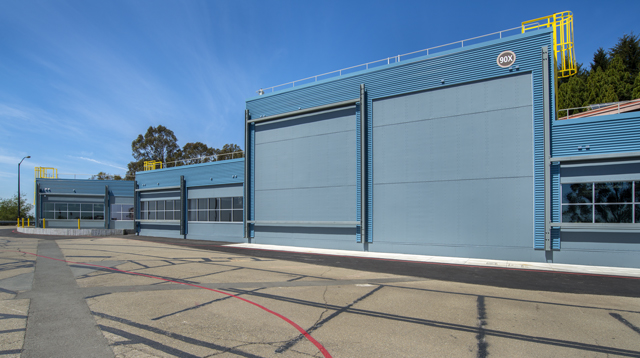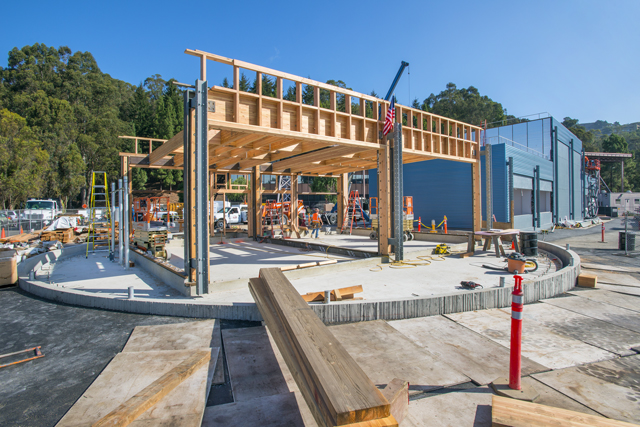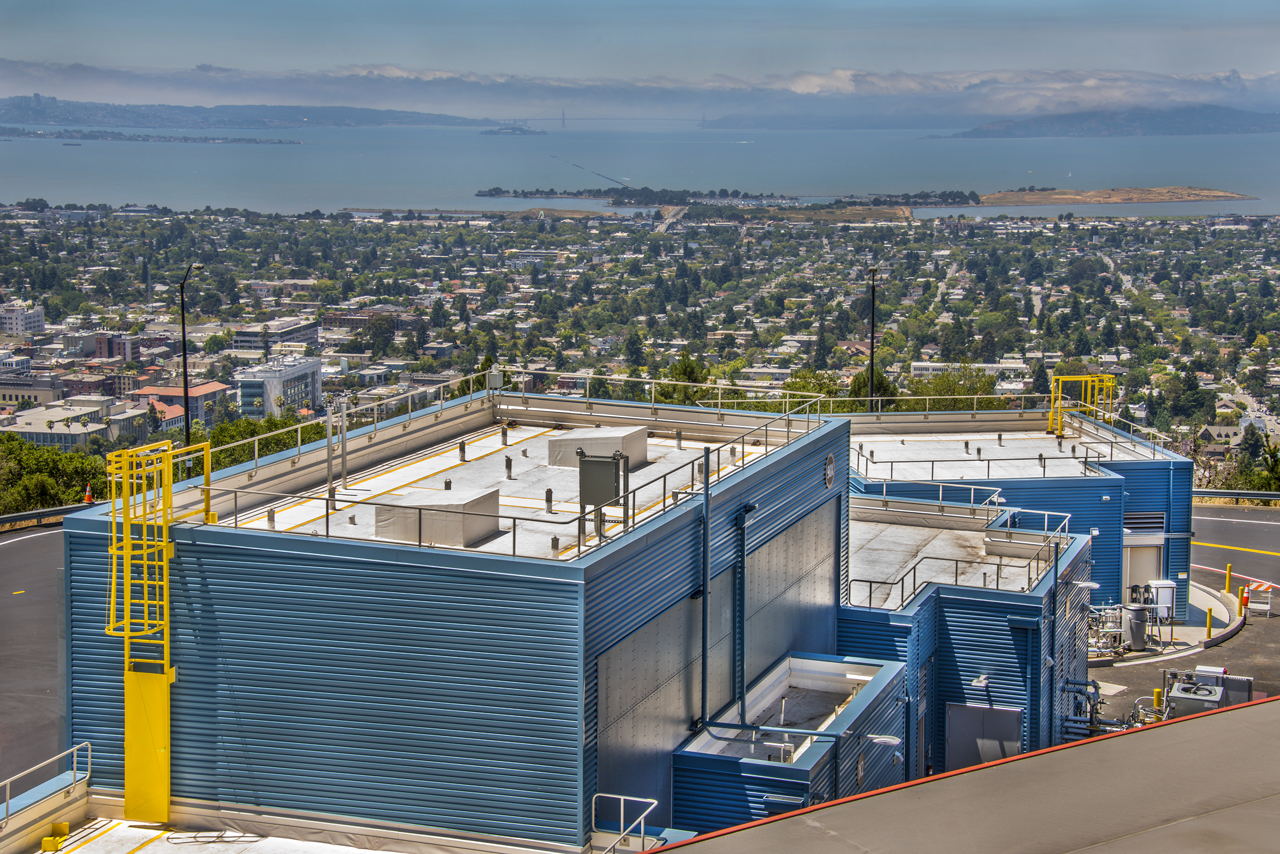High up in the hills of Lawrence Berkeley National Laboratory sit four square, blue buildings you’d be forgiven for finding nondescript. Inside, they’re decorated with drab grey carpet familiar to any cubicle worker. But it’s the buildings’ electronic guts that make them unique in the whole world. These labs — including one that rotates 270 degrees — are where office buildings of the future will be tested.
In research parlance, these buildings are called “testbeds”. They’re part of the new $US16 million FLEXLAB, short for the Facility for Low Energy Experiments, which opened today. This may not sound as sexy as “high energy experiments”, but FLEXLAB has far more potential to impact your everyday life. It’s here that scientists, architects, and engineers can mimic the conditions inside and outside just about any building on Earth — from temperature, to sun exposure, to the body heat of people sitting inside them.
Take your office, where you spend half of your waking hours. If you’re like me, you’ve probably suffered in a office that was too cold on one end and too hot on the other. Or maybe the sun shined directly on your computer screen for two hours every afternoon. FLEXLAB will let architects and engineers plug in different windows and shading and lights and HVAC systems in a test bed, ironing out wrinkles before they’re annoying you on a daily basis.

The four testbeds, with the rotating one at left and a two-story one second to the right.
An office space with integrated systems for light and heat is not just about comfort — it’s really about energy. FLEXLAB is about saving energy by getting systems to work together. A manufacturer of air conditioning systems might, for example, simply test the AC. At FLEXLAB, you could integrate the AC and ventilation systems to capture the cool air that is that normally vented out.
“FLEXLAB has the realism of a real building but the control of a more traditional testbed,” says Stephen Selkowitz, the mastermind behind FLEXLAB. Kevin Hydes, CEO of Integral Group, a green building design group, told Smart Planet that FLEXLAB is “the most important building in America.”
How the Testbeds Simulate Sunlight and Weather Conditions
But why, you might ask, is the important building in American in temperate Northern California? What can FLEXLAB tell us about energy use in muggy summers or brutal winters?
That’s where the ingenuity in FLEXLAB’s design comes into play. The most dramatic example might be the testbed that rotates 270 degrees to track the movement of the sun. (It doesn’t rotate all the way because the other testbeds are to its east.) Not only can the building sit to face different directions, but it can track the sun to mimic the light exposure a building would get at different latitudes or in different seasons.

The rotating testbed being built.
FLEXLAB also has oversized cooling and heating systems that make up for the lack of temperature and humidity variation in the Bay Area. In the summer, for example, the temperature inside might be dropped 10 degrees cooler than usual to create a greater gradient with the outside temperature. The opposite could happen in the winter.
There are limitations still, sure, but FLEXLAB also offers unique capabilities with its, well, flexibility. The “plug and play” facility lets researchers swap out cladding or shades or windows, with extra parts kept in storage. It can take a few days or weeks to reconfigure the testbed to a facility. A thousand sensors monitor everything from power to airflow to lighting in the testbeds. The lab even has portable “occupant thermal generators” that mimic the body heat of people sitting in a space.
The Future of Buildings
Webcorp, which is building a 250,000-square foot space for Genentech in South San Francisco, is FLEXLAB’s first user. When I visited, one testbed had been outfitted with long, colourful desks and novel shading along its windows.
Ultimately, FLEXLAB is about much more than validating certain new products or configurations. It’s about validating models that can predict how a certain window or a shade will perform in, say, an office building in downtown San Francisco.
Selkowitz likes to talk about how he worked on the shading and lightning systems of the New York Times’ iconic glass office building. In that case, they spent over a million dollars building a mockup of the building in Manhattan, which was then of course knocked down when it had served its purpose.

Pictures: Berkeley Lab/Roy Kaltschmidt
But the building industry is changing very quickly. Someday soon, instead of building a mock up at FLEXLAB, architects could one day just fire up a computer program. The future is, as we’ve all been hearing, digital. For now, this curious spinning structure, which looks so innocuous from afar, will be the testing ground for the future of architecture.
